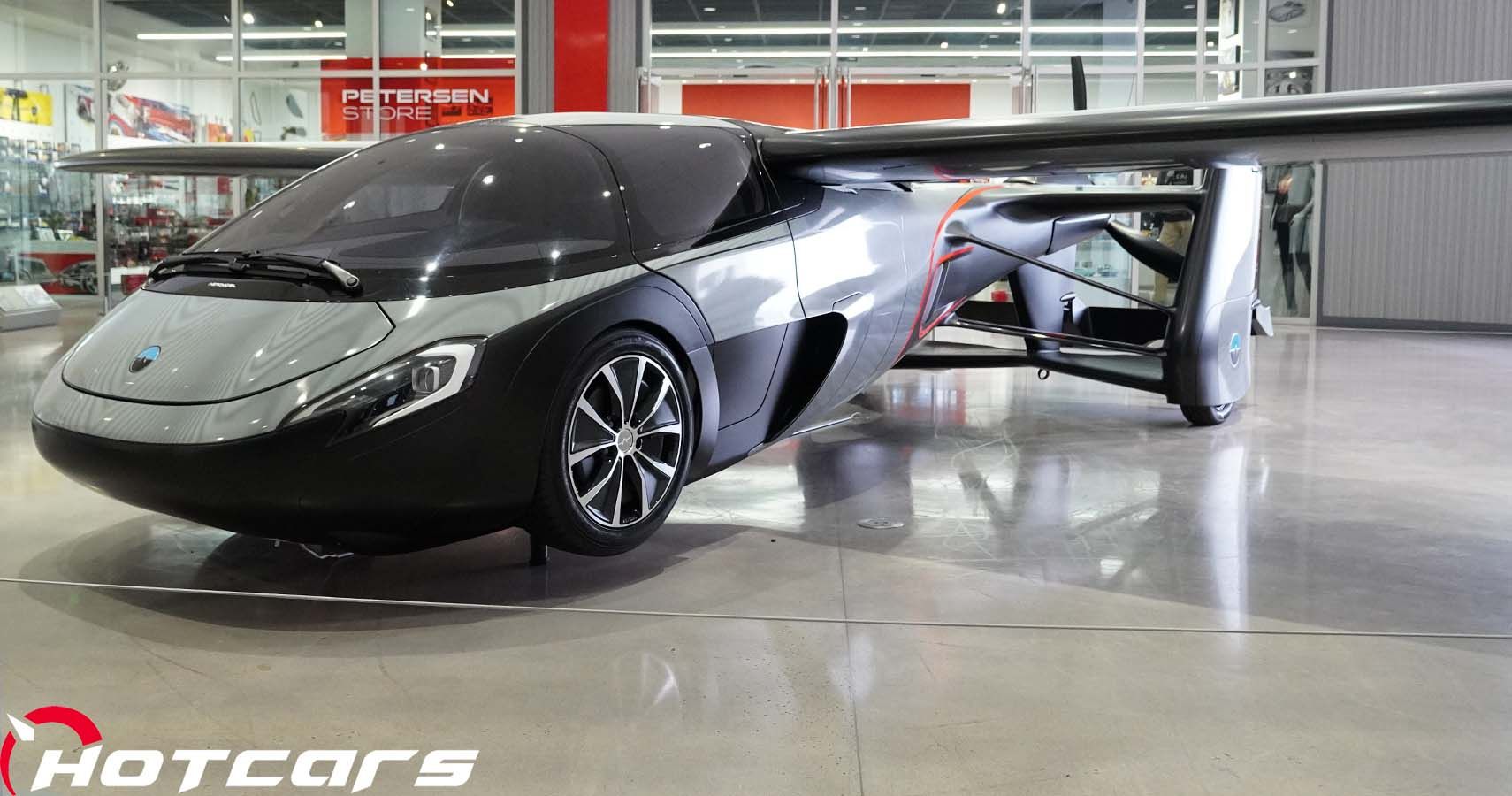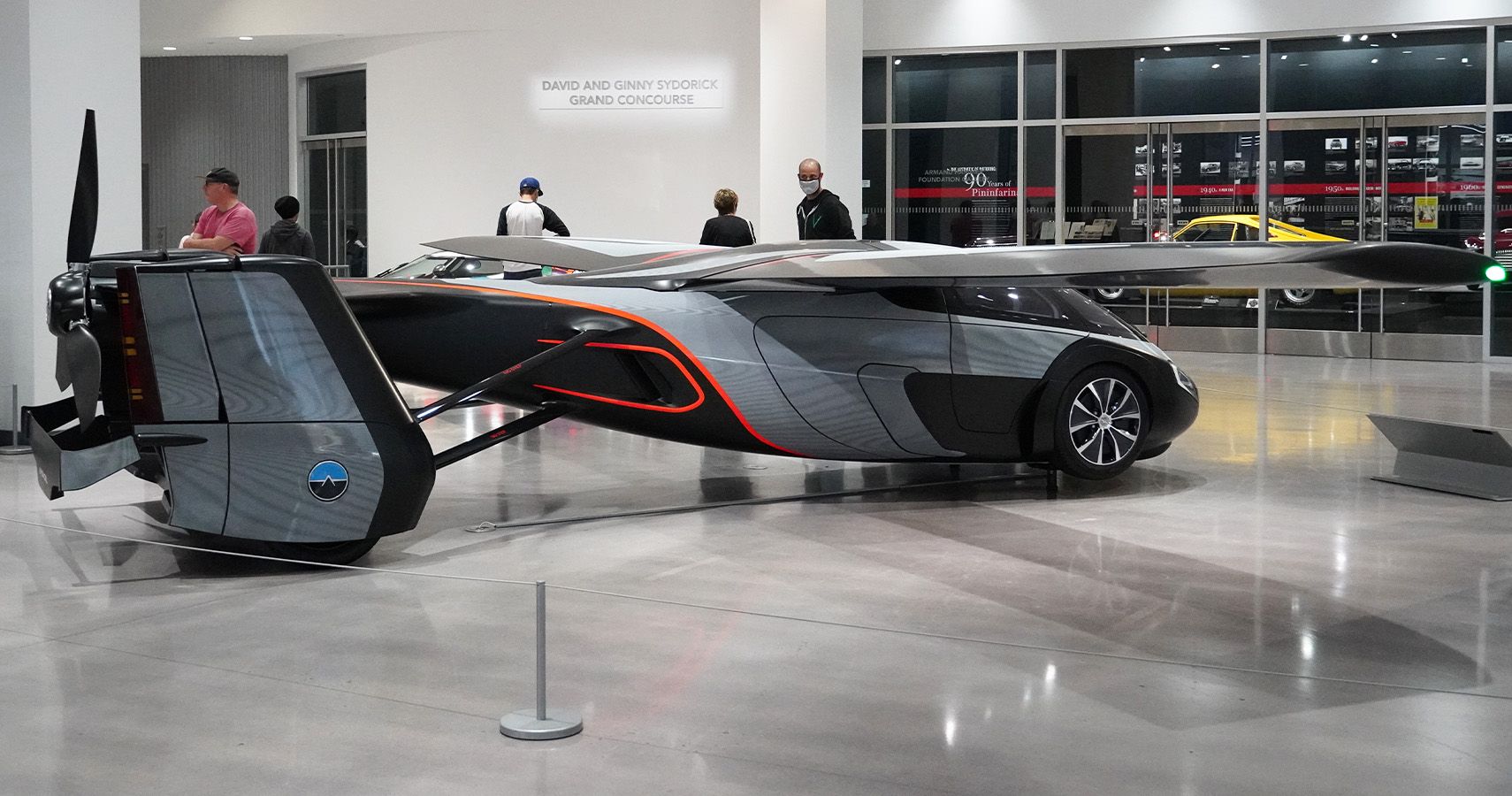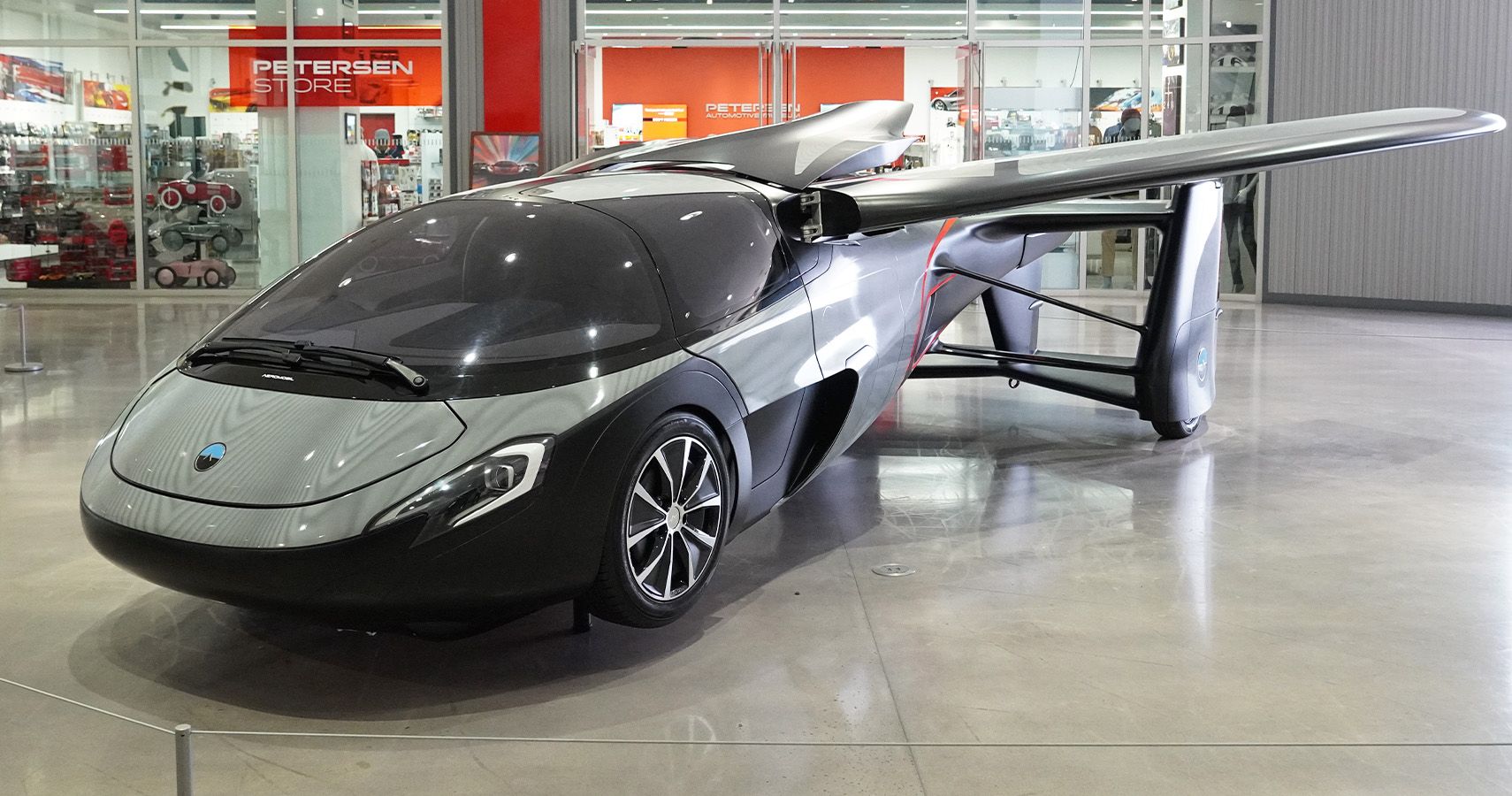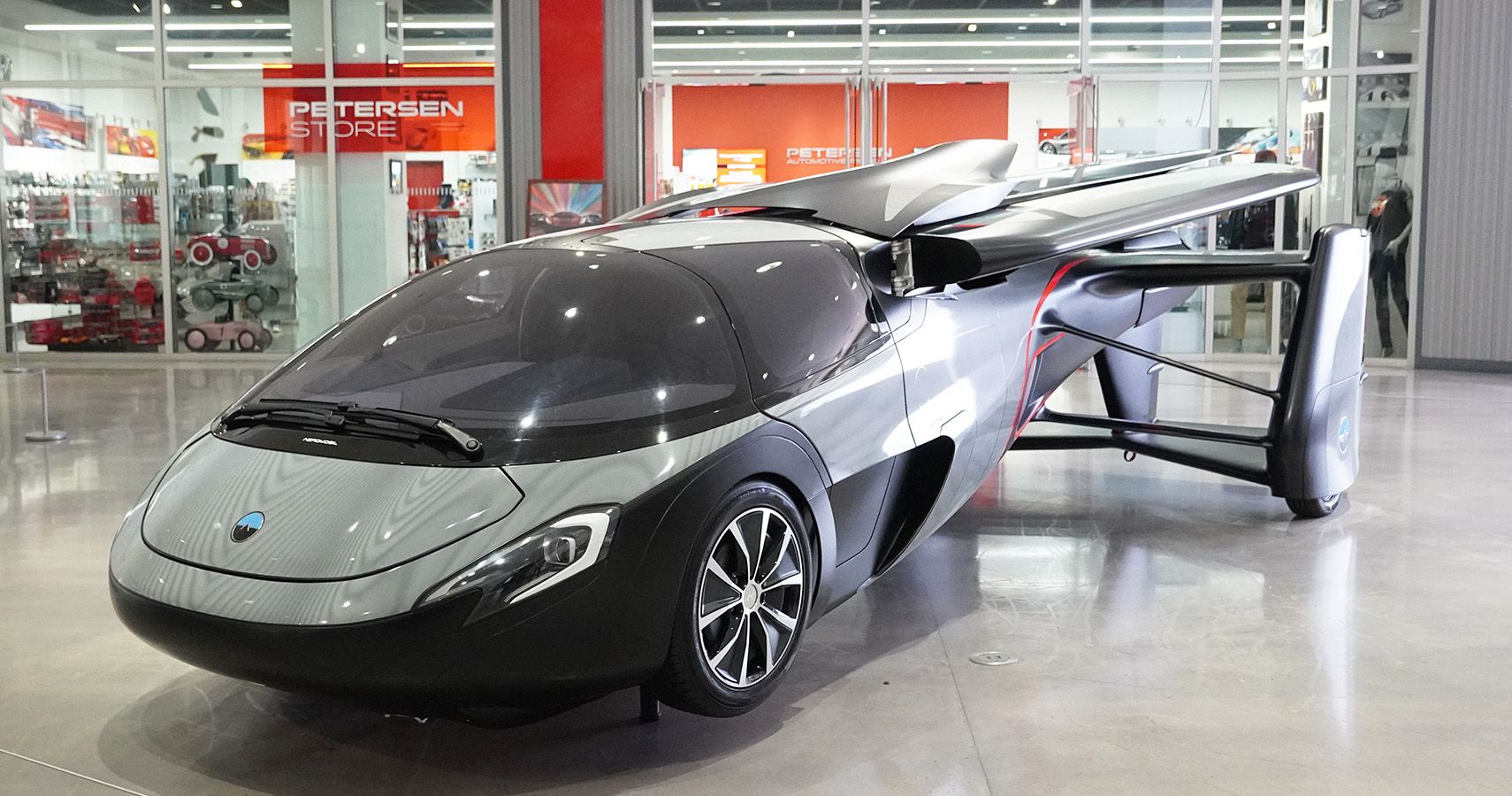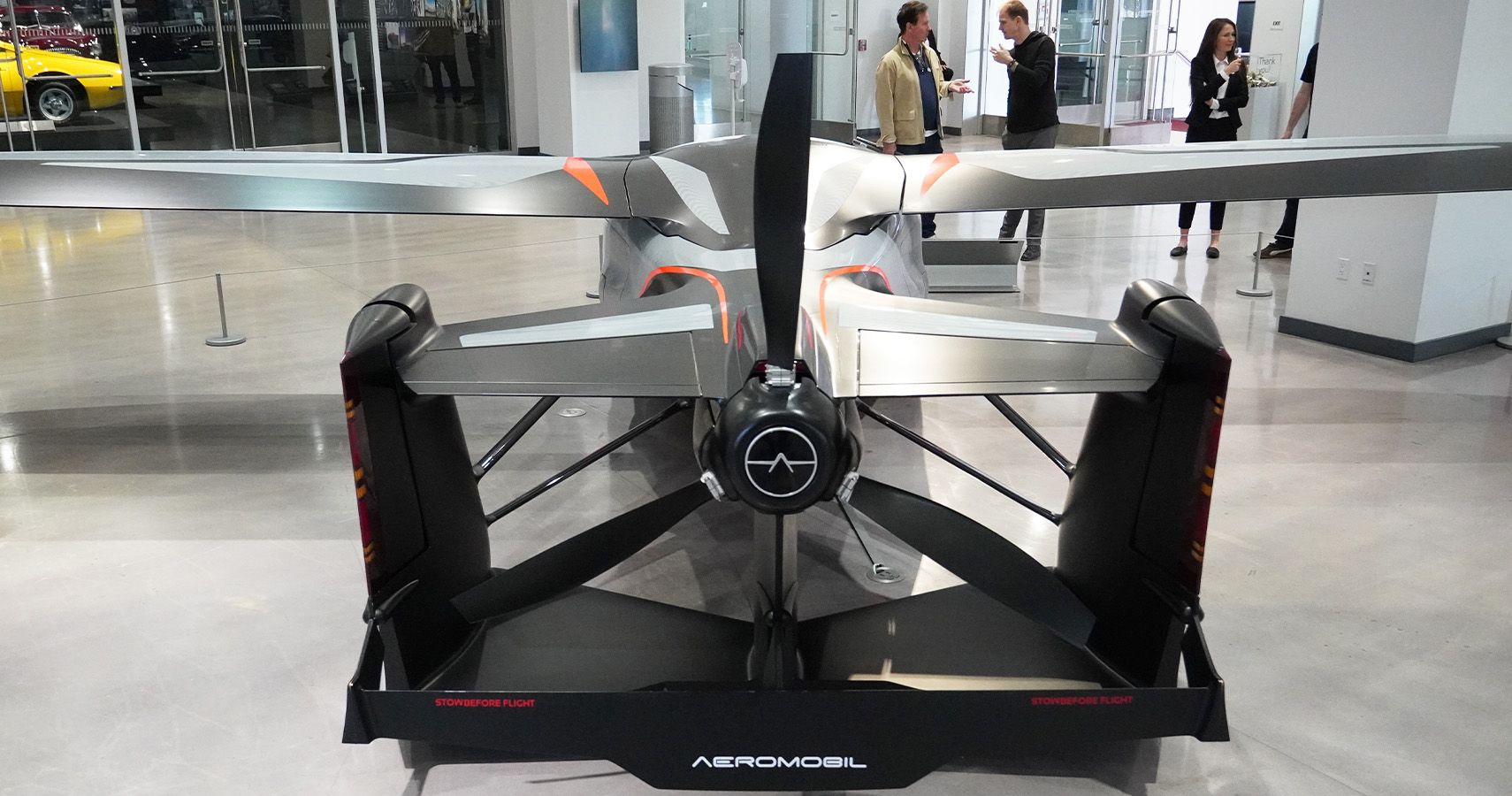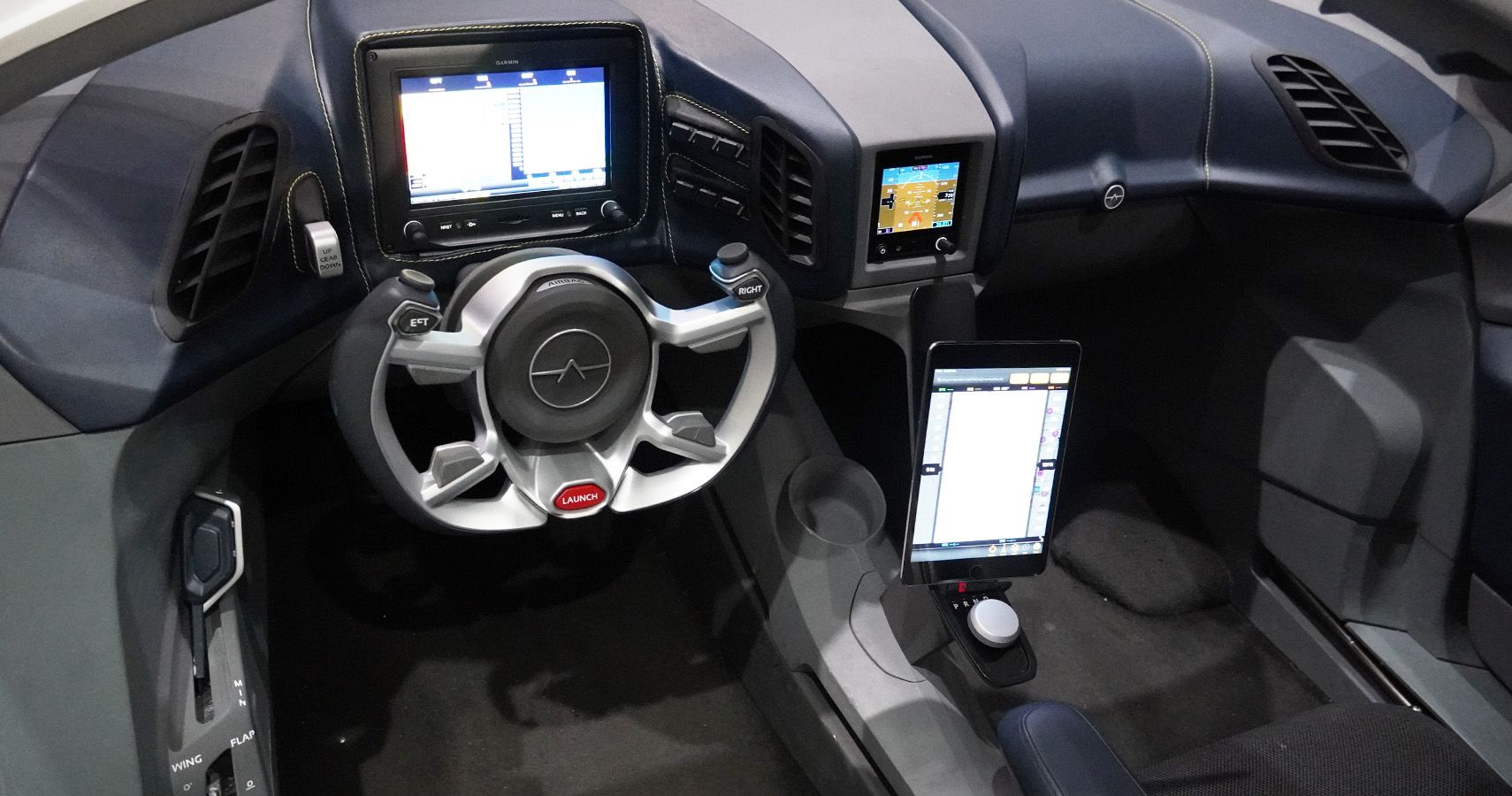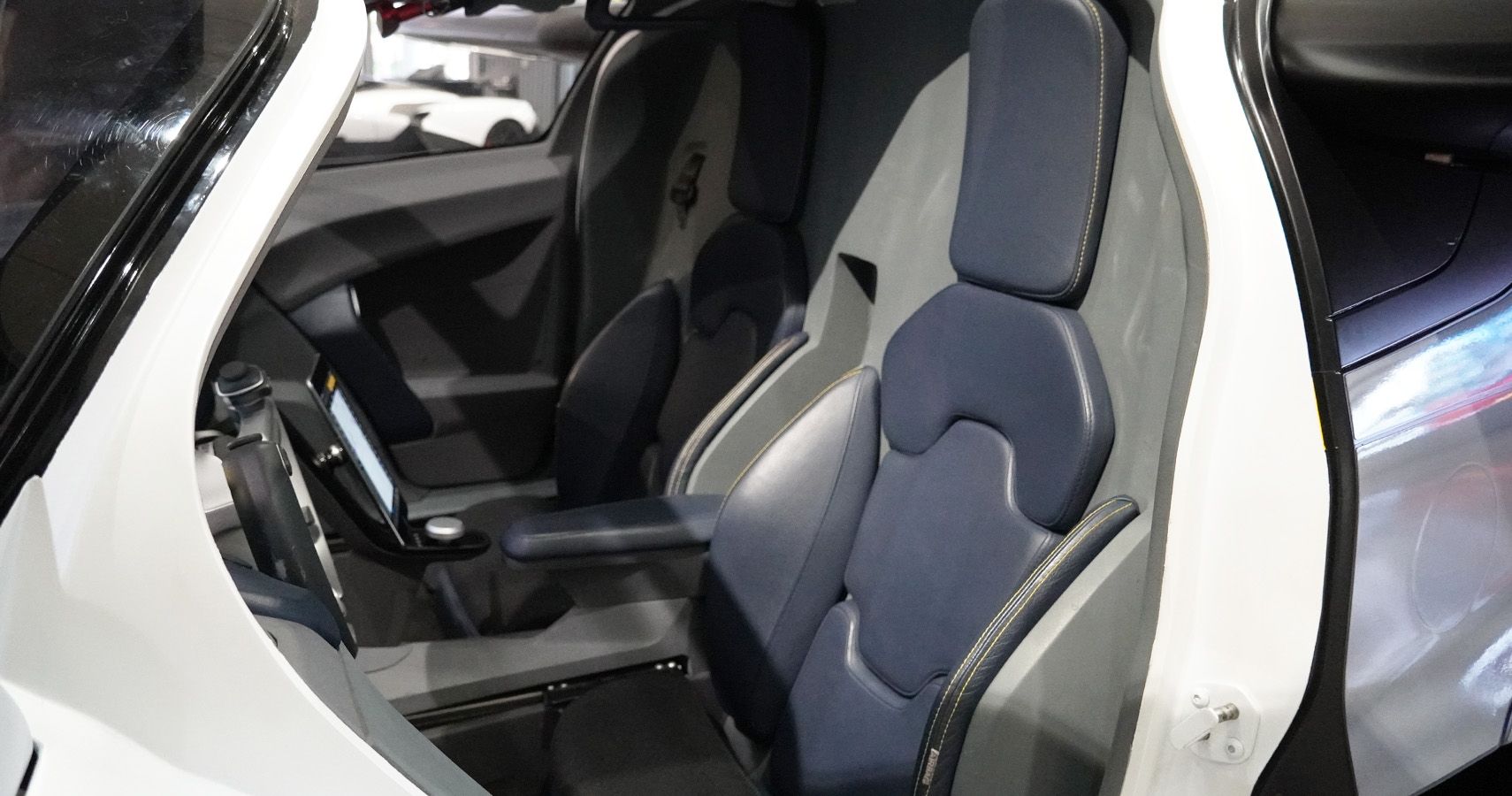The Petersen Automotive Museum's recent hypercar exhibit presented contrasting visions for the future of automotive technology, as supremely powerful internal-combustion engines give way to high-performance electrification. But meanwhile, downstairs in the lobby parked a longtime futurist fantasy brought to life by AeroMobil. Amid all the aerodynamically optimized hypercars, AeroMobil's flying car caught the attention of Petersen guests, immediately conjuring up images of a Jetsons lifestyle full of fantastic freedom and travel without the limitations of on-road driving.
These days, however, much of the industry's focus on the future of transportation seems dedicated to developing electric vertical takeoff and landing craft, known as eVTOLs, which essentially look like giant drones carrying passengers (and typically with some level of autonomous navigation). On a recent visit to the Petersen, I got up close and personal with the AeroMobil AM4.0 flying car prototype, then spoke with CEO Patrick Hessel about how his vision for an "Uber of the sky" might overtake the entire transportation industry much sooner than an eVTOL revolution.
AeroMobil CEO Patrick Hessel
Hessel earned his pilot license after joining AeroMobil, though his business background in high-tech materials led to his current role.
"I founded my first company right out of university," he told me. "I was doing manufacturing of carbon-fiber components for the automotive and aerospace industry. I sold that to LG, the Korean group, just a few years ago. It was a pretty large company in that space, with about 750 employees, then I became an investor and my largest investment, by far, is AeroMobil."
The two-seater AeroMobil prototype that the Petersen hosted features plenty of moving parts, including folding wings and a rear propellor, to back up claims of a 460-mile flying range at a cruising speed of 160 miles per hour, a climbing rate of 1,200 feet per second, and a driving range of 600 miles. AeroMobil's team on hand also demonstrated how the wings fold up to allow for a driving top speed of 100 miles per hour.
But especially in a museum housing some of the world's greatest automobiles, calling such a creation a car seems like a stretch. Hessel explained that the demands of flight dictate a stronger lean towards aeronautical engineering, though the combination of flying and driving lent him the confidence to also become AeroMobil's majority shareholder and CEO.
Flight Dynamics A Priority
I asked Hessel, given his experience as a pilot, how the two-seater AeroMobil actually handles in the air.
"The flying car pretty much has been designed around the flight dynamics of the Cessna 172, which is a very safe and easy-to-fly plane," he revealed. "We want to make sure that somebody with little flight experience, who just has a private pilot license, is able to safely fly this plane."
Because AeroMobil also needs to provide enough motivation to both the rear propeller and front drive wheels, a hybrid drivetrain with a turbocharged internal-combustion engine produces 300 horsepower, which Hessel told me also helps in-flight performance because the flying car can climb so quickly. Meanwhile, takeoff and landing sound much easier, too.
"As soon as you land or during take-off, you basically are very, very stable on the ground because four wheels obviously have all that stability," he told me. "Rather than the maneuvering with three wheels with some crosswinds coming in and all that."
On-Road Driving A Focal Point, Too
The entire concept of a flying car revolves around a successful blend of in-air and on-road performance. Looking at AeroMobil's design, which converts from a wingspan of 30 feet to a collapsed width of seven feet, at an overall length of 20 feet, I wondered how well such a long vehicle might then drive on public roads.
"There's some trade-offs you make," Hessel admitted, before adding, "At the end of day, it is a very lightweight vehicle. It has a 300-horsepower engine. So the power-to-weight ratio is actually very, very good. But of course, the aerodynamics have not been optimized for the car perspective. But it's still a reasonable car."
With claimed 0-60 time of around 10 seconds, nobody will win any drag races in the AM4.0—but convenience, not racing, is the point here.
A New Vision Of Door-To-Door Service
Combining the convenience of a car with the range of a plane attracted Hessel to AeroMobil because he views each mode of transportation as constrained, to certain extents, by the location of airports and the physical mapping of roads.
"I was just fascinated by a vehicle that is able to move pretty much anywhere at any time," he said. "So being totally free rather than always being limited somewhat. For private trips, which I do with the car and also with a plane, for fun weekend trips, or trips for a few days, like tours. I think that's really a game-changer to have a flying car because you can enjoy the best of both worlds."
And the ability to drive a car straight to an airstrip and take off immediately sounds like a dream because doing so eliminates the worst elements of more traditional long-distance travel, including the time-suck of TSA security, renting or hiring cars, and landing only at major airports (especially in America, given the lack of widespread locomotive adoption). Plus, everyone always gives themselves too much of a time cushion when traveling via plane, just in the hopes of never missing a flight, leading to more wasted travel time.
"We literally solve that problem by having a single mode of transport which is door-to-door."
Next, add in the satisfaction factor to AeroMobil's flying car concept, too.
"It's obviously much faster," Hessel explained, "But also more enjoyable to fly seeing the world from above, especially the 10,000 feet. That kind of level is really beautiful."
Aerial Ride-Hailing
Of course, a major limitation to widespread flying car adoption—other than the potential for anything to go horrifically wrong—involves who actually drives the car to the runway and then, who pilots the car after the transformation into a plane. For AeroMobil, that quandary led to two different designs: the AM4.0 two-seater that typically requires a private citizen with both driver and pilot licenses, plus a four-seater AM NEXT that a chauffeur-turned-pilot drives and flies. And the latter allows Hessel to envision an entire new business model for AeroMobil.
"We would vertically integrate it and have professional pilots who pick up the passengers. So that means it really enables everybody to use the service and is no longer limited to pilots. The two-seater is limited, to some extent, because you need to have a pilot license to fly."
"You can also call it aerial ride-hailing," he told me. "Meaning door-to-door. It's completely unique."
Most ride-hailing businesses attract investment with grandiose schemes to transition daily commutes from asphalt to aerial flight using eVTOLs. But a transportation gap still exists between the home or office and the eVTOL itself, not to mention all the charging stations and infrastructure to support a massive burgeoning fleet and economy. At the moment, a flying car like AeroMobil's can land on any of 20,000 small airstrips in the United States, building on existing FAA regulations that AeroMobil took into consideration during their R&D process. Hessel believes eVTOLs simply present too many significant challenges to reach that kind of potential coverage any time soon, from battery weight affecting range to charge times once those batteries reach empty.
"We are significantly more energy-efficient than an eVTOL because we have fixed wings," Hessel explained. "You can just calculate it, even the take-off is about one-to-10 in terms of the energy efficiency."
"The sweet spot is probably between 30 and 300 miles," he went on. "So think of eVTOL between five to 30-mile range, maybe 50 miles. They're talking about 100, but that's probably going to be like 20 years out."
Capitalizing On A Business Opportunity
Uber obviously realizes the potential for aerial ride-hailing, too. But AeroMobil commissioned an unnamed consulting firm to conduct an audit of the potential market for flying car use as an aerial ride-hailing service. The resulting numbers sound almost too good to be true: annual revenue of $70 billion in America alone for a company operating fewer than 10,000 flying cars.
"That's what motivated me," Hessel said. "Largely, of course, the huge business opportunity to build a kind of next generation with something like an Uber of the sky."
AeroMobil's two-seater on display at the Petersen certainly looked the part, with a passenger compartment that blends traditional automotive design with the utilitarian layout of a plane cockpit. Hessel spoke with me shortly after traveling from Los Angeles to Silicon Valley, where a significant customer base for both a two-seater or four-seater flying car seems likely to reside—transforming a concept flying car into a legitimate transportation revolution also seems to fit directly into the disruptive mindset of Silicon Valley investors.
AeroMobil's use case might hew more closely to reality than any players within the expanding eVTOL industry today but whether customers of either a personal two-seater or ride-hailing service can adapt their own mindsets into a Jetsons-style future remains a legitimate question. Still, one sight of a legitimate flying car buzzing around Santa Monica or San Jose sure seems likely to blow up on social media, where changing the world requires exactly the kind of calculated vision that AeroMobil and Hessel seem intent on manifesting in the real world.
Sources: aeromobil.com, petersen.org, and uber.com.

